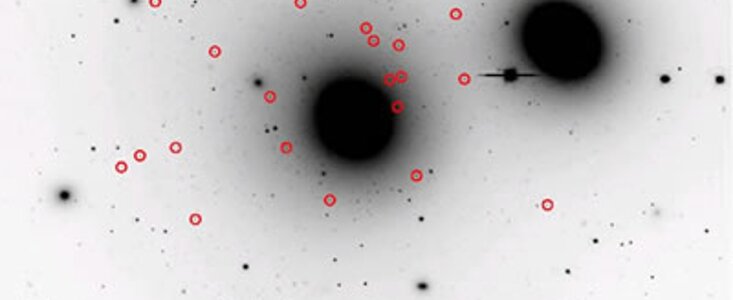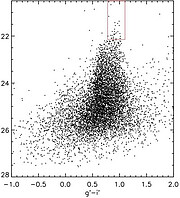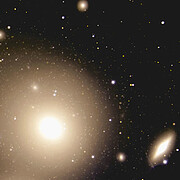Uncovering a Missing Link Between Dwarf Galaxies and Globular Clusters
17 Agosto 2007
Deep Gemini imaging of the cluster of galaxies Hydra I (also known as Abell 1060) at a distance of 54 Mpc (176 million light-years) has revealed an abundance of massive luminous metal-rich globular clusters that appears to impersonate ultra-compact dwarf galaxies. This is the richest population of such massive stellar systems ever found in any nearby galaxy clusters. This new finding by Elizabeth M. H. Wehner and William E. Harris (McMaster University, Hamilton, Canada) indicates that these massive stellar clusters may be transition objects between Ultra-Compact Dwarf (UCDs) galaxies and the more familiar massive globular clusters.
UCDs are a recently discovered type of old stellar system – too faint and compact to be called normal dwarf elliptical galaxies, but too big and bright to be called conventional globular clusters. Small numbers of them have been identified and studied in the nearby Virgo and Fornax clusters of galaxies over the past few years and have also been called “Dwarf-Globular Transition Objects.” But in the Hydra cluster the UCDs actually appear as a red and luminous extension to the sequence of most massive and metal-rich globular clusters. These UCDs appear to be closely associated with the Hydra central giant elliptical NGC 3311. Their masses are all above six million solar masses and extend to almost 30 million solar masses, making them very “high-end” globular clusters indeed – if they were forced to fit into that category. Structurally they are very compact, for comparison, dwarf galaxies have scale lengths of about 300 parsecs, while these UCDs are at least ten-times smaller and thus hard to distinguish from globular clusters other than by their exceptionally high luminosities.
The images for this study were obtained with the Gemini Multi-Object Spectrograph (GMOS) at Gemini South (Figure 1). The photometry is deep, reaching limiting magnitudes of 26.7 in the g’ band and 26.2 in the i’ band (Figure 2).
Wehner & Harris have also constructed a full-color image of the Hydra field (shown in the background box on this page), tailored to show the thousands of globular clusters around NGC 3311. This image is not in the Wehner & Harris paper but can be found here
Where do UCDs come from?
Where do UCDs come from? One of the most common suggestions is that they originated as the massive nuclei within normal compact dwarf ellipticals that are frequently found in rich clusters of galaxies like Hydra. If these dwarfs then become stripped of their diffuse outer envelopes via “threshing” on their repeated orbital passages by the giant galaxies in the cluster, they would lose their envelopes and leave behind only their dense nuclei, which survive today as UCDs. They might have also formed from the agglomeration of young massive star clusters in locations of ongoing, violent star formation. A third idea is that UCDs may just be the ultra-high-mass extension of globular clusters and share a common formation mechanism with their lower mass cousins. The new results from Wehner and Harris tend to favor the latter scenario. Regardless of how one of these compact stellar systems is assembled, they are beginning to mark out a new and intriguing bridge between dwarf elliptical galaxies and globular stars clusters – two types of objects that had been long thought to be unrelated.
Enlaces
- “UCD candidates in the Hydra Cluster”, by E. M. H. Wehner and W. E. Harris, in The Astrophysical Journal Letters, 2007, in press.




